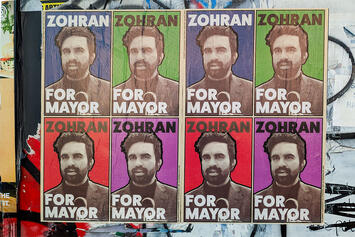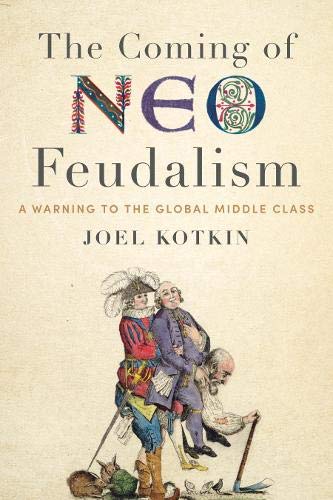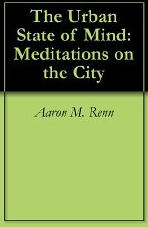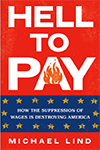
Zohran Mamdani may represent the future of New York, but only by destroying the secrets of its past success. The city, even under the quasi-socialist mayor Fiorello La Guardia, has from its Dutch days been a fundamentally capitalist enterprise. It is the search for success, often by less than respectable means, which led millions – including the ancestors of Donald Trump – to Gotham.
Mamdani calls himself a democratic socialist. The party’s platform seeks “the abolition of capitalism” and the “social ownership of all major industry and infrastructure”. It goes further than the conventional Leftism of New York, which was social democratic, but strongly patriotic and interested in a stronger economy. The old-fashioned New York Left fought for civil rights, but also for equal treatment and greater opportunity. It would no more talk about taxing “whiter” areas, as Mamdani’s campaign platform recently did, than embrace defunding the police, which he formerly espoused.
To be sure, the exodus that will be most followed in the media will be that of the ultra-wealthy. Like London, New York, even as it has lost its middle orders, continues to attract the rich, at least part-time. Yet however much they love the opera, the fashion or Broadway, the ultra-wealthy cherish their riches even more.
This process appears already to have started. Between 2018 and 2022 over hundred thousand taxpayers left for Florida, draining an estimated $14 billion from the city’s coffers. Mamdani’s election would be a boon for places like Palm Beach, Austin and Dallas, which is building a stock exchange to rival Wall Street. Eric Johnson, Dallas’s mayor, has suggested that Mamdani’s election could increase his own city’s appeal among “rattled” business people fearful of plans to tax them at much higher rates in New York.
But the larger threat perhaps lies in the loss of the city’s middle class. Pummelled by high taxes, a weak economy, street disorder and miserable education, the city’s long-established minority groups – Italians, Irish, Jews, African Americans, Puerto Ricans – have been heading for the exits for years. This trend was joined by younger people, particularly of marriage age, and accelerated during the pandemic.
Left behind are the most recent immigrants, largely from developing countries and many of them Muslim. But Mamdani’s true base lies basically with affluent, young, childless, single professionals (a majority of adult Manhattanites have never been married). Their unifying principle is rent control and staying true, like Mamdani, to their college indoctrination.
This new political nexus between recent migrants and hipsters – despite often vast cultural divides – should be familiar to residents of Paris, London or Toronto, and is also increasingly common in Los Angeles and Chicago. To trumpeters of the Left, like The Guardian, this could be the “roadmap” that leads Democrats back to power. Mamdani is not only good for America, Salon suggests, but for “the world”.
He seems unlikely, however, to be good for New York City’s Jewish community. When I was growing up, the city was home to roughly two million Jews, one in four New Yorkers. Today it is down to one million, just slightly above the almost 800,000 Muslims estimated to be in the city according to a 2016 study (the figure is likely to have risen since). Jews are still a part of the mosaic but a clearly shrinking one. They will surely feel ever more uncomfortable with a mayor who reacted to the October 7 pogrom by criticising the Israeli response and who has threatened to arrest Benjamin Netanyahu if he bothers to come to the largest diaspora city.
Increasingly, Jews are finding better and safer homes elsewhere. Many have moved to the American South, long considered a difficult terrain for non-Christians. Florida’s Jewish population, barely 100,000 in 1960, now stands at over 670,000. The Jewish community in Houston grew by approximately 50 per cent between 1986 and 2016. The Jewish population in Atlanta has also grown strongly to well over 100,000. In 1930, 60 per cent of American Jews lived in the Northeast to today’s 40 per cent. The percentage of American Jews who live in the South has grown from 9 per cent in 1960 to 22 per cent today.
This geographic sea change can be seen on college campus communities, as well. The first and third largest Jewish student populations in the United States today are the University of Florida and Central Florida University. According to a Brandeis study, southern schools tend to be less intolerant of Jews.
There still remains a chance that Eric Adams, the scandal-plagued current Mayor of New York, might win as an independent. But New Yorkers need to realise that Mamdani and his brand of hipster socialism represents a rejection of the entrepreneurial, tolerant and profoundly American nature of the city.
This piece first appeared at: Telegraph.
Joel Kotkin is the author of The Coming of Neo-Feudalism: A Warning to the Global Middle Class. He is the Roger Hobbs Presidential Fellow in Urban Futures at Chapman University and and directs the Center for Demographics and Policy there. He is Senior Research Fellow at the Civitas Institute at the University of Texas in Austin. Learn more at joelkotkin.com and follow him on Twitter @joelkotkin.
Photo credit: Eden, Janine and Jim, via Flickr, under CC 2.0 License.












